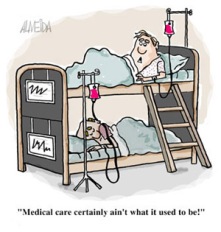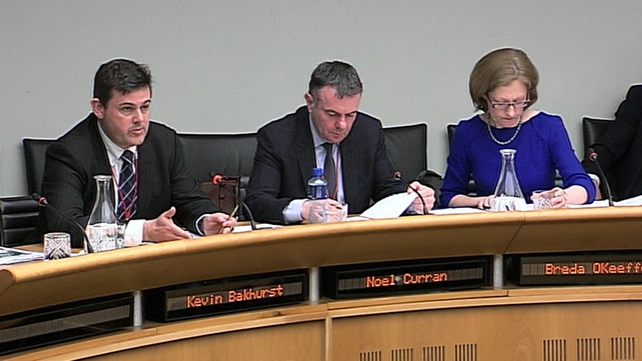Central Bank survey says Irish house prices will fall in 2013
The Central Bank said today that a new quarterly survey for the Irish houses/ residential property market shows a majority of those polled expect Irish property prices to fall in 2013.
More than 50% of the sample comprising estate agents and surveyors, as well as those with a more indirect involvement in the industry such as economists, market analysts, and academics, both in surveys for 2012 Q3 and Q4, said that residential property prices will continue to fall throughout 2013. However, the share of participants with a positive outlook for prices in the coming year increased significantly, to 35% in Q4, from 17% in the initial survey.
A large number of those taking a negative view believed that the fall in prices compared to 2012 would be less than 8 per cent and approximately one third of those surveyed expected a rise in prices in 2013. One in ten believed prices this year would remain stable compared to the average in 2012.
The Central Bank said that only a quarter of owner occupiers in arrears of three months or more have had their mortgages restructured by lenders. It also reported that the vast majority of borrowers given reduced payments were only put on these arrangements on a short term basis.
Overall financing conditions for non-financial corporations (NFCs) have weakened since the last Review. The volume of new lending by Irish banks to NFCs has remained below 12% of GDP since 2011, below the pre-bubble level of around 20% in 2003-05. The low value of available collateral, such as property, has constrained recent lending volumes.
NFC debt levels are high, but debt owed to Irish banks is falling . This is due to net loan repayments, write-downs of bad debts and transfers of loans to the state-run National Asset Management Agency (NAMA). NAMA was created in 2009 to acquire non-performing, property-related loans from the domestic banking sector.
Other sources of debt include the financial activities of multinational corporations, such as intercompany lending from non-resident affiliates and corporate treasuries. These debts grew rapidly from 2008 to 2012, due primarily to lending from non-resident creditors, but the NFC sector’s net debt remained stable because of corresponding acquisitions of debt instrument assets. Given that bonds and other debt securities are not a significant component of Irish corporate finance, a wider range of financing sources than Irish banks could potentially mitigate the effects of domestic financial sector risks on firms.
A symptom of our ailing Irish health system
“An old problem with a new Doctor”


Is this a problem or what? A new hospital waiting list initiative has been launched aimed at clearing long waiters. At present, five hospitals account for over 60% of those on inpatient hospital waiting lists for more than a year.
Latest figures show that just over 18,500 patients are waiting over three months for hospital treatment, while just over 8,600 are waiting over six months.”
Here’s another new problem “a new hospital waiting list initiative has been launched aimed at clearing long waiters. At present, five hospitals account for 70% of people waiting more than a year for treatment. Latest figures show that just under 24,000 are waiting more than three months for treatment, while just over 11,300 are waiting longer than six months for treatment. The numbers waiting over six months have nearly doubled over the past four months.”
The first news item is from January 2010, during the tenure of that much berated former Health Minister, Mary Harney. The second news item is from this week, during the tenure of the current Health Minister James Reilly, who we are told (frequently) is tackling the waiting list problem.
Well, if frequently launching waiting list initiatives and issuing upbeat statements constitutes tackling the problem, one can suppose that Minister Reilly is tackling the problem.
Unfortunately, statistics tend to be brutally frank, and the latest waiting list figures would beg the question as to whether anything has really changed since Mary Harney departed Hawkins House in early 2011.
Admittedly, the numbers on waiting lists increased substantially during Ms Harney’s tenure after January 2010, and by the time James Reilly came to office in March 2011, three month plus waiters stood at 26,000. After a short period of decline,the numbers are now almost reaching those not so dazzling heights yet again.
The Minister has just announced he has launched yet another initiative aimed at clearing the long waiters from the five hospitals responsible for the longest lists?
Ministerial initiatives to tackle waiting list backlogs have been part and parcel of the health planning landscape since before Mary Harney’s time as Minister.
Unfortunately, to date they have been no more than more than sticking plaster solutions that so far have failed to tackle the resourcing and organisational problems that have bedevilled proper access to public hospital care for decades, and which have worsened as a result of the economic collapse of recent years.
To be fair to James Reilly, his establishment of a Special Delivery Unit to cut waiting lists and improve access to hospital care has had some success. During 2012, the SDU’s intervention did lead to some improvements in treatment waiting lists, particularly for long waiters.
By the end of 2012, the total number of three month plus waiters had reduced to 18,773, and among these, only 143 patients were waiting over nine months for treatment. The latter figure is now 3,715. The average waiting time for treatment is now three months, compared to 2.5 months last December.
History is repeating itself. Before they started to get out of control, in late 2009, Mary Harney, through the National Treatment Purchase Fund, had got waiting lists down to roughly the levels James Reilly achieved by late last year, before they inevitably rose again.
This waiting list roller coaster of recent years has a common theme running through it- diminishing healthcare resources and in particular, inadequate hospital and community resources to deal with pressure points in the system.
Can any Minister really keep a permanent lid on waiting lists in a health system that has had more than one fifth of its funding removed since 2008, and with more cuts to come in 2014 and in 2015?
Yes, James Reilly can argue that he has had some success with waiting lists and he will deal with the latest ‘slippage’ through a €18 million funding injection (which will probably get swallowed up pretty quickly).
But to date it appears that his actions have essentially been ‘fire brigade’ exercises that have yet to deal with systemic flaws in the system.
He says the recent waiting list rise was due to a longer ‘clinical winter’ and a higher than normal level of elderly emergency admissions. But if the system is being changed for the better, as we are told, shouldn’t it be able to cope with these surges?
If waiting lists are really being tackled, shouldn’t we be seeing a more or less permanent decline in numbers, and not have to be frequently going back to the waiting list drawing board simply because very ill emergency patients are turning up in hospitals and needing beds?
It is alarming to note that the Minister admitted this week that the recent pressure on beds caused by higher than usual admissions through EDs had to be be dealt with through reducing the number of planned procedures, thereby increasing waiting list numbers, which then have to be dealt with by yet another special initiative.
And the Minister certainly likes his initiatives.
James Reilly’s SDU has launched many of these with varying degrees of success. We have had the patchily successful treatment waiting list initiative referred to above.
We have had an ED trolley wait initiative, which has has reduced trolley numbers, although the figure are still quite high.
Also, figures from the Irish Nurses and Midwives Organisation indicate that recently, the old trolley problem has simply turned into an overcrowded ward problem.
We have had two initiatives under James Reilly to reduce waiting times for colonoscopy and gastroscopy tests. Numbers waiting for these tests, often used to check for cancer, are on the rise again.
We have had a more recent initiative from the SDU to reduce outpatient waiting lists. With nearly 7,000 waiting over four years for a first outpatient appointment and 380,000 in total on these lists at the latest count, this particular initiative clearly has a long way to go.
And then we have the ‘hidden’ waiting lists that don’t normally get officially reported.
A recent Irish College of General Practitioners survey of 300 GPs showed that their private patients only had to wait an average of four days wheh they were referred to a private hospital for for an ultrasound test, whereas their public patients had to wait on average 14 weeks for this test at a public hospital.
The average wait for an MRI scan for a GP’s public patient was 22 weeks – nearly six months. Private patients could get these scans done within seven days, the survey showed.
If the GP college didn’t tell us this then we would never have heard about these shocking waiting lists. Up to date figures on average waiting times for GP referrals for hospital diagnostic tests are not published by the HSE or the Department of Health.
Another hidden waiting list is where even if patients get into the hospital system, they still have to wait. Diabetes patients in some hospitals sometimes have to wait two to three years for an outpatient check up, where they are already in the hospital system and have already seen a consultant for the first time.
Again, these statistics are not revealed publcly by the HSE or Department of Health.
James Reilly cannot be faulted for making an effort to improve public patient access to our health system.
Yet, through all the swings and roundabouts of fluctuating waiting list and trolley numbers, and the often reported hardship suffered by sick patients through poor access and poor facilities, and Ministerial promises that teings are getting better, the underlying message seems to be that our health system still doesn’t work, despite all the ‘spin’.
The bottom line, despite some pockets of efficiency and indeed excellence in the service, is that our broke statelet does not have the resources to provide an adequate level of hospital care at crucial pressure points, or to fund community and primary care to a proper level take pressure off hospitals and keep patients out of hospital.
Taking these harsh truths into account, everything else we are told or retold by Minister Reilly and his junior ministers is essentially window dressing.
And as for universal healthcare by 2016 (to be run by insurance companies no less), dream on.
Director General of RTÉ Noel Curran outlines savings achieved through renewed contracts


RTÉ DIRECTOR GENERAL NOEL CURRAN HAS OUTLINED TO THE OIREACHTAS COMMUNICATIONS COMMITTEE THE SAVINGS ACHIEVED THROUGH THE RESTRUCTURING OF THE ORGANISATION.
The meeting focussed on the current budgetary position at RTÉ and the pay levels for contract and staff broadcasters.
Mr Curran said salaries became over inflated during the boom years and on-air staff were paid too much.
However, he pointed out that reductions have been achieved as contracts have been renewed.
He said he realises the public has concerns about the top earners at the station, but said the value of RTÉ presenters needs to be recorded.
He noted the huge “reach” around the Marian Finucane show at weekends.
Responding to a question from Fianna Fáil TD Timmy Dooley, Mr Curran said the commercial market remains difficult.
He said that while RTÉ has a target, that target depends on where the second half of the year goes.
Regional moves will follow in Waterford and Athlone.
Mr Bakhurst said the hope would be that all three regional office moves will be completed by the end of the year.
Mr Curran said there is a danger that a new media charge will be seen as a “panacea” for every ill in the broadcasting industry.
He told the committee that RTÉ is competing against stiff competition, such as Sky, BBC and Google.
Mr Curran said the market is changing so fundamentally that in five or ten years if there is no broadcaster investing across the board “we could be at a huge loss”.
County Galway has lowest proportion of children in the country


County Galway has the lowest proportions of children in Ireland.
According to the CSO’s latest regional quality of life report, just over 16 percent are aged 0-14.
Counties Meath and Laois had the highest proportions of population aged 0-14 in 2011 with 25 and 24 percent respectively.
County Galway had the lowest proportion of that same age-group with 16.5 percent.
In the city, it was 20.9 percent.
The counties with the highest proportion of the population aged 65 and over in 2011 were Cork City at 15percent, Mayo 15 percent and Leitrim at 14.8 percent.
County Galway was 9 percent, and the city was 13 percent.
Smoking in the home ‘claims the same number of lives as road accidents’


Smoking figures for 2007 of a cigarette stubbed out in an ashtray. The number of people trying to quit smoking via NHS services has roughly trebled in the last decade but success rates have fallen, figures show. There were almost 788,000 “quit dates” set with NHS stop smoking services, with almost 384,000 successful attempts.
Cigarette smoking in the home is now responsible for as many deaths as road traffic collisions, scientists have revealed. A new Irish-Scottish survey has confirmed children in particular are at major risk from smoking in the home and action is needed to deal with the crisis.
Researchers at NUI Galway, working with colleagues in Aberdeen,Edinburgh and Birmingham, discovered that burning solid fuels did not adversely affect air quality at home but a major problem emerged from cigarette smoking.
Dr Marie Coggins of NUI Galway said: “Our research shows that air quality in homes using coal, wood, peat and gas is mostly comparable to that of outdoor air. However, smoking at home creates much greater levels of air pollutants.
“Levels of particulate pollution were up to 17 times levels found outdoors. The impact of exposure to such levels on vulnerable groups such as children in homes where smoking occurs indoors needs urgent action.”
The study, ‘Indoor Air Pollution and Health’, was funded by the Environmental Protection Agency and shows that the concentration of particulate (tiny pieces of solid or liquid matter) pollution in the homes of smokers who smoke indoors is six times higher than the World Health Organisation’s recommendation for general outdoor air quality.
It reveals that Europeans spend 90pc of their time indoors. Advances in the design and construction of domestic dwellings have also resulted in the amount of air entering and leaving a typical building now estimated to be 10 times lower than it was 30 years ago.
DEATHS: The authors conclude that the health burden of exposure to environmental tobacco smoke (ETS) is considerable and believe it is likely that the number of deaths from ETS exposure at home in each country is broadly comparable to those from road traffic accidents (212 in Ireland in 2010; 208 in Scotland in 2010).
The incidence of respiratory illness among children is also likely to be considerable.
The report’s authors have called for improved national survey campaigns to determine what proportion of the population is exposed to environmental tobacco smoke at home.
Key recommendations include: l A co-ordinated national campaign to educate smokers and non-smokers about the health effects from smoking at home and the promotion of smoke-free homes.
* More education as to the health effects of second-hand smoke in the home as a means of reducing exposures.
* Greater focus on finding ways to encourage smokers to move towards smoke-free homes.
Professor Luke Clancy, director general, TobaccoFree Research Institute Ireland, said that while it was very reassuring that indoor pollution in Ireland was very low even where coal, peat or gas were used, the findings about second-hand smoke were very worrying.
“Action is needed to encourage people not to smoke or at least not to subject others to the health risks associated with inhaling other people’s smoke,” he added.
Irish potato famine pathogen identified by Scientists


Scientists have used plant samples collected in the mid-19th Century to identify the pathogen that caused the Irish potato famine.
A plant pest that causes potato blight spread to Ireland in 1845 triggering a famine that killed one million people.
DNA extracted from museum specimens shows the strain that changed history is different from modern day epidemics, and is probably now extinct.
Other strains continue to attack potato and tomato crops around the world.
The fungus-like infection causes annual losses of enough potatoes to feed hundreds of millions of people a year.
A team led by The Sainsbury Laboratory, Norwich, traced the global spread of potato blight from the early 1800s to the present day.
Until now, it has been unclear how early strains of Phytophthora infestansare related to those present in the world today.
Researchers in the UK, Germany and the US analysed dried leaves kept in collections in museums at Kew Royal Botanical Gardens, UK, and Botanische Staatssammlung Munchen, Germany.
High-tech DNA sequencing techniques allowed them to decode ancient DNA from the pathogen in samples stored as early as 1845.
These were compared with modern-day genetic types from Europe, Africa and the Americas, giving an insight into the evolution of the pathogen.
“This strain was different from all the modern strains that we analysed – most likely it is new to science,” Prof Sophien Kamoun of The Sainsbury Laboratory told BBC News.
“We can’t be sure but most likely it’s gone extinct.”
Treasures of knowledge: The researchers believe the strain – HERB-1 – emerged in the early 1800s and continued to spread globally throughout the 19th Century.
Only in the 20th Century, after new potato varieties were introduced, was it replaced by another Phytophthora infestans strain, US-1, which is now dominant around the world.
The research, published in the new open-access scientific journal, eLife, suggests crop breeding methods may have an impact on the evolution of pathogens.
“Perhaps this strain became extinct when the first resistant potato varieties were bred at the beginning of the 20th Century,” said Kentaro Yoshida from The Sainsbury Laboratory.
“What is certain is that these findings will greatly help us to understand the dynamics of emerging pathogens. This type of work paves the way for the discovery of many more treasures of knowledge hidden in herbaria.”
Commenting on the study, Professor Sir David Baulcombe of the Department of Plant Sciences at the University of Cambridge said it shows how we can use herb specimens to track biodiversity.
“It might be a revival in the fortunes or relevance of dried plants,” he said. “It illustrates very nicely the arms race over pathogens and their host.”
Phytophthora infestans – which causes potato blight – emerged in the US in 1844, and spread to Europe the following year.
The summer of 1845 was mild but very wet, giving the perfect conditions for the blight to spread.
The failure of the crop in Ireland – which relied heavily on potatoes as a food source – led to the deaths of about a million people from starvation and disease between 1846 and 1851.


No comments:
Post a Comment